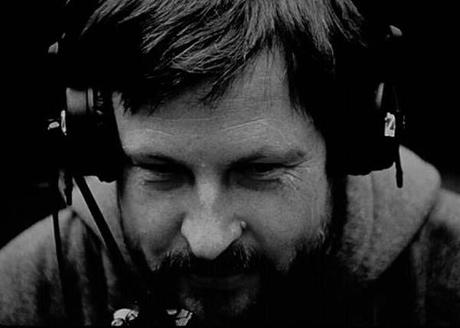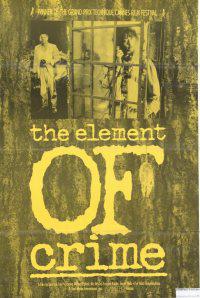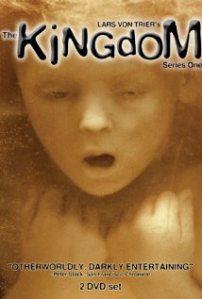This post is part of the LAMBs in the Directors Chair Event #28 on Lars von Trier. Read more here.

Lars von Trier, the controversial Dane who helmed such audience-dividing films as The Idiots and Antichrist, is the subject of this special post, in which I quickly review every single feature film he has ever directed, since I’m fortunate enough to have seen each one of them. All in all, he has directed fifteen feature films thus far (some of these made for TV), but how do they all hold up after critical analysis? Let’s start from the beginning.
Befrielsesbilleder (aka Images of a Relief) (1982): This genuinely disturbing prisoners-of-war film is more of an experiment than anything else for Lars von Trier. Available as a DVD extra or via YouTube, the film is only an hour long and doesn’t really make any sense at first glance. The screen soaked in reds, yellows and greens, the strange film has a dark and grungy look but is only momentarily fascinating and often boring. However, in all fairness, it does have it’s moments and isn’t really all that bad. 6/10
 The Element of Crime (1984): I saw this film so long ago I barely remember it, yet The Element of Crime is, in certain ways, an artistically memorable film. Shot in a distinct neo-noir style with lush colours and darkly disturbing collaborations of tonally sickening hues, it’s an interesting, surprising little cult movie released in good form by the Criterion Collection. 7/10
The Element of Crime (1984): I saw this film so long ago I barely remember it, yet The Element of Crime is, in certain ways, an artistically memorable film. Shot in a distinct neo-noir style with lush colours and darkly disturbing collaborations of tonally sickening hues, it’s an interesting, surprising little cult movie released in good form by the Criterion Collection. 7/10
Epidemic (1987): Even though this is possibly LVT’s worst film, I still think it’s quite underrated and definitely has moments of greatness. Featuring von Trier himself in the lead role, it’s a dark but humorous look into the screenwriting business and a Contagion-like illness that leaps from the page into real life, particularly in the film’s harrowing, stunning final sequence. 6/10
Medea (1988): Like Befrielsesbilleder, this is also available via YouTube and I’m definitely going to rewatch this sometime soon. Based on an unadapted screenplay by Carl Theodor Dreyer, this underrated film starring Udo Kier and Kirsten Olesen is visually marvelous and thematically rich. Wondrous to watch, and though flawed at times, consistently interesting and emotional. 7/10
Europa (1991): If those first four films were Lars von Trier finding his footing, Europa confirms that he has found it and is using it to take big steps. The final film in a trilogy beginning with Element of Crime and Epidemic, Europa is a stunning, lush film with hypnotic cinematography, great acting and powerful sequences of stunning, marvelous action, Europa returns to the popular theme of war and finds from it a powerful picture; the fruitful final cut of what Befrielsesbilleder was trying to be. 8/10
 The Kingdom (1994): Originally a TV series then cut together as a film, this medical drama is funny, dark, amusing and colourful. The characters, particularly the vivid, profane Stig Helmer who screams “Danish scum!” from the rooftops of a structurally unsound hospital where inside, chaos reigns. Worth seeing, if anything, for the final sequence of the first series, in which an abortion goes horribly wrong and a woman gives birth to a fully grown man. In my opinion, the most graphic scene in von Trier’s entire filmography. 8/10
The Kingdom (1994): Originally a TV series then cut together as a film, this medical drama is funny, dark, amusing and colourful. The characters, particularly the vivid, profane Stig Helmer who screams “Danish scum!” from the rooftops of a structurally unsound hospital where inside, chaos reigns. Worth seeing, if anything, for the final sequence of the first series, in which an abortion goes horribly wrong and a woman gives birth to a fully grown man. In my opinion, the most graphic scene in von Trier’s entire filmography. 8/10
Breaking the Waves (1996): Though some may disagree, this is my favorite of all Lars von Trier’s films. Featuring Emily Watson in a career-defining performance as Bess MacNeill, the simple-minded but passionate young woman who is naively swept up into a darker world, much like many of von Trier’s heroines, with saddening consequences. 10/10
The Idiots (1998): I’ve taken a lot of shit for this, but I absolutely love The Idiots. I think it’s one of Lars von Trier’s absolute best works, and an uncompromising, unflinching look at social disorder and non-conformity taken to its extremes. At first a comic film making fun of the bourgeois with intentionally rebellious attitudes, it becomes in its third act a horrific, terrifying, disturbing look at intolerance, powerlessness and a complete loss of control. 10/10
Dancer in the Dark (2001): The trilogy that began with Breaking the Waves and The Idiots comes full circle with this, arguably von Trier’s most popular and widely loved film. While not admittedly one of my top favourites, it’s not noticeably weak and is genuinely powerful in its many song and dance numbers, wonderfully shot and coloured. Bjork’s performance as the haunted, blinding Selma is wonderful and a pivotal part of one of the saddest on-screen tragedies of recent years. 8/10
Dogville (2003): This is Lars von Trier’s film. More than any other work he has directed, this is perfectly symbolic of his style, oeuvre, beliefs, madness, sanity, control and recklessness. It is an ultimately nihilistic, pessimistic look at American life during the Depression, and it’s no more anti-American than any other similar film directed by an American. It’s three hours long and harrowing, moving and extremely well-acted, and if you’re looking at exploring Lars von Trier, it’s essential. 10/10

The Five Obstructions (2003): Though in the style of his Dogme 95 experiments Lars von Trier refused to be credited as director of this, he is clearly the auteur in charge, and in this fascinating, marvelous experiment he challenges his mentor Jorgen Leth to recreate five new versions of Leth’s short film The Perfect Human with rules imposed by von Trier to hinder his progress. A genuinely interesting, amazing look at the creation of art on film. 9/10
Manderlay (2005): The second in an as-yet unfinished trilogy that began with Dogville, Manderlay replaces Nicole Kidman with Bryce Dallas Howard, a grievous, terrible and nightmarish error. Howard is awful, and I mean awful in every single film I’ve seen her in, and her presence only serves to ruin this flawed and uninteresting sequel that has a great cast apart from her, but simply cannot keep its intriguing premise afloat. 5/10
The Boss of It All (2006): Now here’s an underrated movie. Whilst some people will find the editing style annoying (the random jump cuts and shot changes were chosen by an automated computer, for reasons that tie in nicely with the film’s theme of a loss of corporate control), I embrace them, and I think this atypical von Trier comedy is hilarious and well-made. The actors are likable and bring grace and humor to their parts, and this is a delightful film to watch. 8/10
 Occupations (2008 Short): While this isn’t technically a feature, I thought it was worth giving this absolutely laugh-out-loud hilarious short film which was included in the Chacun son Cinema anthology a mention. Watch it here.
Occupations (2008 Short): While this isn’t technically a feature, I thought it was worth giving this absolutely laugh-out-loud hilarious short film which was included in the Chacun son Cinema anthology a mention. Watch it here.
Antichrist (2009): Ah, the infamous Antichrist. Love it or hate it, it’s a Lars von Trier movie and you’ve got to give the director some credit for its stylishness and genuinely thought-provoking material. I have heard too many people call it pretentious garbage to stay silent. I completely disagree with that, and I think this is a well-made, supremely well-acted horror film with content that’s explicit but not gratuitous and running themes that are powerful and not for a second exploited. Some say “artsy fartsy trash,” I say a “powerful, effective, great movie,” and certainly one to be debated for ages. 10/10
Melancholia (2011): Lars von Trier’s latest cinematic outing is the more popular and generally liked Melancholia, which continues the visual style adopted in Europa, ignored for a little while, then picked up again for Antichrist. From the film’s marvellous, mindbending opening overture (which I’m very happy to have seen in a cinema) to its explosive finale, the film is an emotional, dark ride through the side of the human psyche von Trier has proved himself an expert at excavating, and a really great movie. 9/10
–
There. Those are my thoughts on each and every single Lars von Trier film so far. What do you think of them? Leave a comment below.

